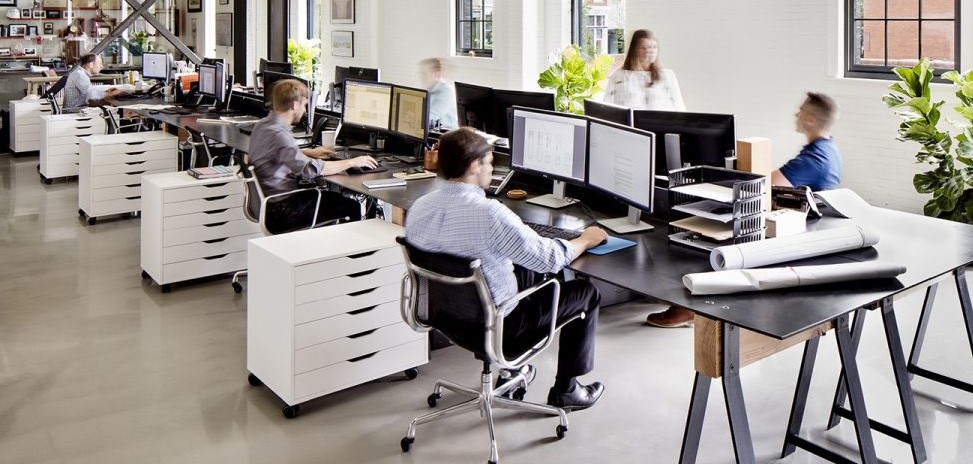
Flex-core staffing is an excellent way for architecture firms to break the hiring-firing cycle, increase their firm’s bottom line, and keep their employees happy. By hiring temp architects to fill in the peaks and valleys that always occur, firms can keep their core staff intact and avoid the need to engage and fire employees constantly. This practice can save firms both time and money, and it can also help them maintain a higher level of quality control.
Few things are more costly to a business than the hiring and firing cycle. Not only does it take a toll on your human resources department, but it can also significantly impact your bottom line.
Fortunately, there are ways to break the cycle and improve your financial situation. You can improve your bottom line and increase profits by taking some simple steps.
1. Review your hiring practices. Poor hiring practices are the most common causes of the hiring and firing cycle. If you’re constantly hiring and then firing employees, it’s time to take a closer look at your process. Are you screening applicants properly? Are you asking the right questions?
2. Train your managers. Another common cause of the hiring and firing cycle is poor management. If your managers constantly have to deal with employee issues, it’s time to give them some training. Teach them how to manage their teams and handle conflict appropriately.
3. Communicate with your employees. One of the best ways to avoid the hiring and firing cycle is to communicate with your employees. Let them know what your expectations are, and give them regular feedback. This will help them understand what they need to do to meet your standards.
4. Be consistent with your policies. You must comply with your policies to avoid the hiring and firing cycle. Make sure that everyone in your company knows your procedures and that they are followed. This will help to create a sense of stability and reduce the need for turnover.
5. Offer incentives. Another great way to avoid the hiring and firing cycle is to offer incentives for good performance. If you have employees who consistently meet or exceed your expectations, offer them a bonus or other incentive. This will show them you’re serious about their work and appreciate their efforts.
These simple steps can break the hiring and firing cycle and improve your bottom line. Implement these tips in your business today and see the difference it makes.
There are many ways to increase an architecture firm’s bottom line. One way is to increase the number of projects that the firm takes on. Another way is to increase the fees that the firm charges. Still, another method is to cut costs.
One way to increase an architecture firm’s bottom line is to increase the number of projects that the firm takes on. This can be done by marketing the firm more aggressively or by expanding the geographic areas that the firm serves.
Another way to increase an architecture firm’s bottom line is to increase the fees that the firm charges. This can be done by expanding the firm’s service rates or adding new services that command higher fees.
Still another way to increase an architecture firm’s bottom line is to cut costs. This can be done by streamlining the firm’s operations, eliminating unnecessary expenses, or finding ways to save on materials and labor.
Increasing an architecture firm’s bottom line can have many benefits. It can improve the firm’s financial health, allow the firm to hire more staff, and enable the firm to expand its services. Taking steps to increase an architecture firm’s bottom line can help the firm become more prosperous.
ABOUT THE AUTHOR
After working at various design practices on a full-time and freelance basis and starting his design firm, David McFadden saw a gap to fill in the industry. In 1984, he created an expansive hub for architects and hiring firms to sync up, complete projects, and mutually benefit. That hub was Consulting For Architects Inc., which enabled architects to find meaningful design work while freeing hiring firms from tedious hiring-firing cycles. This departure from the traditional, more rigid style of employer-employee relations was just what the industry needed – flexibility and adaption to current work circumstances. David has successfully advised his clients and staff through the trials and tribulations of four recessions – the early ’80s, the early ’90s, the early 2000s, the Great Recession of 2007, and the Pandemic.
Hiring trends
|
architects, architecture, business, Consulting For Architects, design, employees, firing, firms, flex, Hiring, human, Interviewing, jobs, Labor Market, manage, porfolio, resources, resume, screening, staffing
|

Architecture Billing Index
Architecture firms anticipate relatively slow adoption rates for new and emerging technologies in design and construction
| By Kermit Baker, Hon. AIA, AIA Chief Economist |
U.S. architecture firms reported another solid month of growth in October 2015. The AIA’s Architecture Billings Index (ABI) was 53.1 for the month, demonstrating a solid increase in firm billings that was just below the 53.7 score for September. New project inquiries, with a score of 58.5 for the month, and new design contracts at 51.7, point to healthy business conditions at architecture firms. However, both readings fell a bit from their September level, suggesting that growth may moderate just a bit in the coming months.
 Click to expand The overall strong performance in business activity in recent months is beginning to show a regional pattern. Firms in the South have been reporting continued strong business conditions through the year, while firms in the West have been reporting acceleration in billings over the past few months. In contrast, Northeast firms have been reporting weak conditions in recent months, and Midwest firms—while reporting growth—have seen billings increase at a somewhat slower pace.
Firms in all the major construction sectors reported healthy conditions in October, with the strongest growth coming from commercial/industrial firms. Residential firms recorded their second straight monthly increase after seven straight monthly declines. Institutional firms saw growth on par with September, but their ABI scores have been declining for the past several months, indicating that the pace of growth of billings at these firms has been moderating.
In Spite of International Concerns, U.S. Economy Doing Well
The economy sputtered a bit in the third quarter, producing only 1.5% growth at an annualized basis. However, there appears to be some firming in economic conditions to date in the fourth quarter. There was a net increase of 271,000 payroll positions nationally in October, well above expectations, and the strongest monthly increase so far this year. That pushed the national unemployment rate down to 5.0%, its lowest level since early 2008. The construction sector has been an important contributor to the employment front, adding 31,000 payroll positions for October and 159,000 through the first ten months of the year. Construction has thus accounted for almost 8% of payroll gains so far in 2015.
An improving labor market, coupled with continued low gasoline prices, has improved the consumer’s outlook. The preliminary consumer sentiment index from the University of Michigan jumped up in November to its highest level in several months. This has produced higher levels of consumer spending, as retail sales—after netting the lower amounts spent on gasoline—saw healthy gains in October. A key test of the perceived health of the economy will come in mid-December when the Federal Reserve Board decides whether an increase in short-term interest rates is warranted to prevent potential future overheating.
Innovative Technologies May Not Yet Be Ready For Prime Time
In the design professions, as in other sectors in our economy, change is inevitable, but the pace of change may be slower than commonly thought. In an effort to see how the profession might be evolving over the coming five to ten years, this month’s question to the AIA’s Work-on-the Boards panel looked at design and construction elements that might be increasing in importance over this time period.
Topics covered included the areas of design and construction process and techniques, building characteristics, building features and systems, and construction materials. Several of the areas deemed to be becoming more widespread over this period are already fairly widely utilized, such as lighting technology systems (LED, day lighting/natural light), water conservation/efficiency, and energy efficiency designs and retrofits. The overwhelming majority of respondents felt that these design elements would be increasing in importance over the coming five to ten years.
However, other recent innovations that typically have garnered more attention may not reach the same levels of adoption over this period according to architecture firms. One example is the use of robotics in the construction process. Only one in nine respondents feels that this technology will significantly increase in importance over the next five to ten years. Conversely, about four in ten respondents feel that there were be no significant increase in this technology over the coming years. The results were not much different for 3D printing used in the construction process. Only about one in six respondents feels that this technology will significantly increase in importance in the coming years.
This month, Work-on-the-Boards participants are saying:
• After a late summer lull, clients seem to be back at their desks, making decisions and issuing RFPs and RFQs. Prospects for 2016 are looking up.
—33-person firm in the West, mixed specialization
• Firms are very busy and fees are slowly catching up with personnel salary increases.
—6-person firm in the South, institutional specialization
• Northeast (other than NYC) is still struggling to come out of the recession.
—4-person firm in the Northeast, mixed specialization
• New problem for us, long-predicted: talent shortage. Could increase staff by 15-20% if people were available. I expect this to last a long time.
—20-person firm in the Midwest, commercial/industrial specialization
Additional Resources:
Join the AIA Practice Management Knowledge Community to receive more practice-related content
Reference:
The ABI Work-on-the-Boards Survey Panel is open to any AIA member who is principal/partner of their firm. Apply to join the ABI panel by completing a brief background information form on your firm here.
Article originally posted on the AIA.org Website. |
Architecture Practice
|
aia, architects, architecture, Architecture Billing Index, Consulting For Architects, David McFadden, design, Economics, Federal Reserve, Fees, Inc, Labor Market, Salaries, Talent Shortage
|










